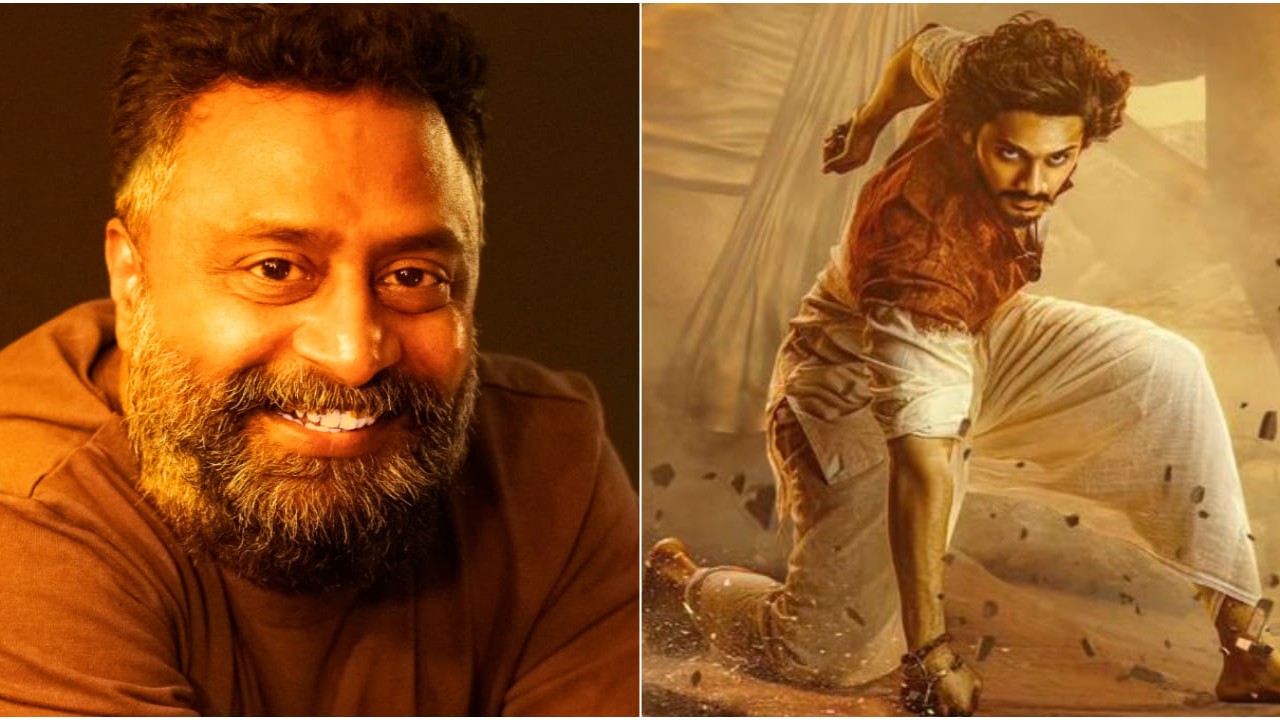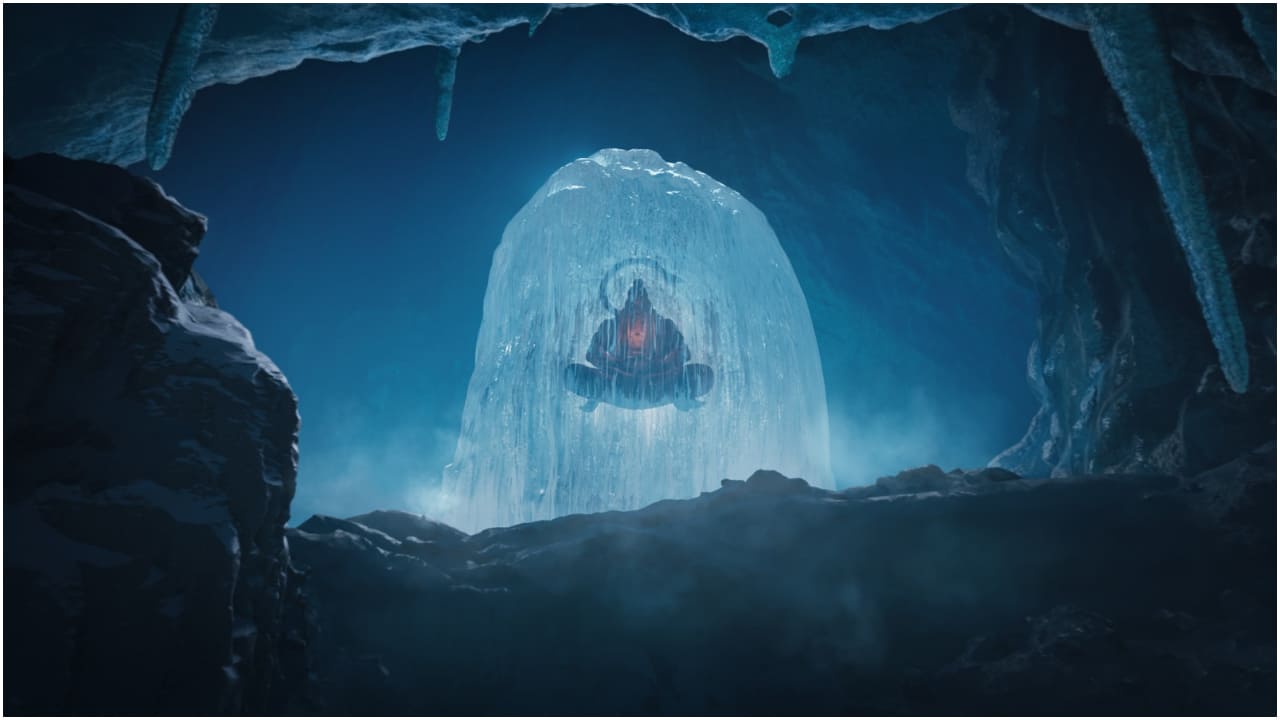EXCLUSIVE: Udaikrishna, the VFX brains behind HanuMan opens up about his journey
In an exclusive chat with Pinkvilla, Udaikrishna, the veteran VFX artist behind films like HanuMan and Baahubali, opened up about his journey in the Teja Sajja starrer, as well as in the industry.

Since the time it was released, Teja Sajja’s latest film, HanuMan has been the talk of the town. The film, helmed by Prasanth Varma, is a one of a kind superhero film and is part of a much larger universe called the Prasanth Varma Cinematic Universe.
HanuMan features an ensemble cast including Varalaxmi Sarathkumar, Amritha Aiyer, Vinay Rai, Jisshu Sengupta, and many more in prominent roles, apart from Teja Sajja. Right from the time of release, the film garnered much praise for all facets of filmmaking, including story, performances, music, and especially the film’s VFX.
The VFX for the film was carried out by industry veteran Udaikrishna Pandamaneti, who has previously worked in films including the Baahubali franchise. He is also the founder and CEO of a VFX company called the BeastBells. In the latest update, Pinkvilla had an exclusive chat with Udaikrishna, regarding his journey in the VFX industry, as well as with HanuMan.
Check out excerpts from the interview:
1. HanuMan has received a lot of praise for the VFX in the film, especially in terms of the title song, the Anjanadri village scenes, the visuals of Lord Hanuman, and the underwater scene and these are just a few. Can you tell us a bit about your journey in the film? The challenges you faced, and how you dealt with them?
Udaikrishna: Firstly the collaboration with Prasanth Varma was an incredibly dynamic and synergistic process. Prasanth approached me with a basic teaser concept, and I was immediately drawn to the core idea. Recognizing the potential for extraordinary visual enhancements through high-end VFX and animation work, I strongly believed that this project could serve as a showcase for the capabilities of my startup company.
As for the scenes that you mentioned, each scene had its own challenge. The title's animation song was a challenge in precision and creativity. We aimed to set the tone for the film with visually stunning animations, which required a delicate balance between artistic expression and technical precision. The result is a sequence that captivates the audience from the very beginning. The Anjanadri village scenes posed a unique challenge due to the inclusion of a colossal Hanuman statue. Ensuring seamless integration of this monumental element into live-action footage demanded meticulous attention to detail and a sophisticated understanding of scale and perspective. The underwater scenes presented challenges related to fluid dynamics and realistic underwater lighting. Achieving a convincing underwater environment while maintaining the clarity of visual elements required innovative approaches to simulation and rendering. The climactic song featuring a photorealistic Hanuman character is undoubtedly a highlight of the film. Initially, the director envisioned incorporating a live-action portrayal of Hanuman. However, as we achieved photo-realistic quality in the 3D animation, confidence grew, leading to a shift in the approach. The decision to focus on a fully animated Hanuman character became a triumph, with the animation itself becoming a highlight of the entire film. Overcoming these challenges required a collaborative effort, technical expertise, and a commitment to pushing the boundaries of VFX innovation. Each sequence in 'HanuMan' stands as a testament to the creative and technical prowess of our team, turning challenges into triumphs and elevating the film to new heights in the world of VFX.

2. Speaking about journeys, another major journey comes off screen, which is your journey through the film, and how you grew with it. Can you tell us some of your personal reflections and how you overcame challenges with HanuMan?
Udaikrishna: The journey with 'HanuMan' has been a testament to the transformative power of vision and resilience in the realm of VFX. One of the key challenges we encountered was the inherent constraint of a low budget. However, instead of viewing it as a hindrance, we saw it as an opportunity to showcase our ability to deliver exceptional visual effects under challenging circumstances. In the face of budget limitations, our team adopted a strategic mindset, focusing on prioritizing key aspects of VFX that would maximize impact. This not only showcased our resourcefulness but also encouraged a culture of innovation within the team, turning what could have been a limitation into a catalyst for creativity. Another significant challenge was in the creation of the photorealistic Hanuman character. Initially, the concept involved live-action footage, but as we achieved a level of realism in 3D animation, we recognized the potential to redefine our approach. Embracing this change became a pivotal moment, turning what could have been a setback into a highlight of the entire film. The journey with 'HanuMan' taught us that challenges are not roadblocks but stepping stones to innovation. Each obstacle presented an opportunity for problem-solving and creative thinking. It required a collaborative effort, resilience in the face of adversity, and a firm belief in the vision we set out to achieve. Ultimately, overcoming challenges in the world of VFX involves adapting to unexpected twists, turning limitations into strengths, and leveraging every opportunity for innovation. 'HanuMan' stands as a testament to the fact that with vision and resilience, challenges can be navigated, and opportunities for groundbreaking achievements can emerge.
3. The superhero genre is fairly new to Indian cinema, from quite a broad perspective. Perhaps, the first superhero film that a lot of us have come across is Hrithik Roshan’s Krrish, which began in 2003. Since then, there have been just a few superhero films, like Ra One, Bhavesh Joshi, Maaveeran in Tamil, Minnal Murali in Malayalam, and then recently we had Brahmastra. Most of these also had a fairly high budget. How did you overcome the issue of a limited budget in HanuMan?
Udaikrishna: Indeed, 'HanuMan' was essentially a low-budget project, and addressing budget constraints is a pervasive challenge in the film industry. Navigating through these limitations required strategic planning and a meticulous approach to resource allocation. We recognized early on that to deliver outstanding VFX within the constraints, we needed a focused strategy. Our approach involved prioritizing key aspects of VFX that were integral to the narrative, ensuring that every visual element added significant value to the storytelling. To make the most of our limited resources, we leveraged cost-effective technologies and innovative solutions. This included optimizing workflows, utilizing open-source tools, and exploring creative ways to achieve high-quality visuals without compromising on the artistic vision. Every resource available to us was maximized to its full potential. This encompassed our talented team's expertise, efficient project management, and strategic partnerships with companies that shared our commitment to excellence. In essence, the challenge of working within a low budget became an opportunity for us to showcase our ability to deliver exceptional VFX even under constraints. The final result is a testament to the effectiveness of our strategic approach and the dedication of the entire team in overcoming budget challenges to create a visually stunning cinematic experience in ‘HanuMan.’
4. HanuMan, from the time of its release has been compared to other mainstream films that depended on VFX heavily, like Adipurush or Brahmastra. Despite having a limited budget, HanuMan seems to have done better, in terms of the VFX department. And the common understanding for people, including myself, is that VFX is a costly business. Can you elaborate a bit more on the comparison and the budget management in HanuMan?
Udaikrishna: Certainly, the success of 'HanuMan' in delivering visuals that stand on par with high-budget films can be attributed to several key factors, with budget management playing a pivotal role. Firstly, our commitment to strategic budgeting from the project's inception was fundamental. We conducted a thorough analysis of where our resources would have the most significant impact on the visual narrative. This involved prioritizing key sequences and allocating resources accordingly, ensuring that every aspect of the VFX added substantial value to the overall cinematic experience. Another critical factor was the efficient utilization of our talented team's expertise. We tapped into their creativity and technical proficiency to devise innovative solutions that yielded impressive results without requiring exorbitant expenses. This collaborative approach fostered a culture of resourcefulness and ensured that our limited budget was stretched to achieve maximum visual impact. Additionally, our reliance on cost-effective technologies and tools allowed us to maintain a high standard of quality while adhering to budgetary constraints. We sought out opportunities to optimize workflows, explore open-source solutions, and capitalize on emerging technologies that provided a cost-effective alternative to traditional approaches. Strategic partnerships also played a key role. Collaborating with companies that shared our commitment to excellence allowed us to access additional resources and expertise, enhancing the overall quality of the visual effects. In essence, meticulous budget management, combined with a collaborative and creative team, enabled us to overcome the limitations of a modest budget and deliver visuals in 'HanuMan' that not only rivaled but often surpassed those of high-budget counterparts, showcasing the power of effective resource utilization in achieving cinematic excellence.
5. How do you feel the success of the VFX dept in HanuMan will affect the scope of VFX in other genres of film, apart from the superhero genre?
Udaikrishna: The success of 'HanuMan' has undoubtedly left an indelible mark on the VFX and entertainment industries, shaping the trajectory of what lies ahead. Looking into the future, I envision a landscape defined by continuous innovation and an increasing integration of technology into the storytelling process. The groundbreaking success of 'HanuMan' has demonstrated the appetite for visually immersive experiences, setting a precedent for what audiences now expect. This success serves as a catalyst for the industry to explore new frontiers in visual storytelling, pushing the boundaries of what is achievable through VFX and animation. As emerging technologies continue to evolve, we can anticipate more seamless integration of virtual elements into live-action footage, creating even more immersive and realistic environments. Real-time rendering and advancements in AI are poised to revolutionize character animations, offering a level of detail and emotion that was once considered unattainable. Moreover, the success of 'HanuMan' emphasizes the importance of compelling narratives complemented by stunning visuals. I believe there will be a growing emphasis on the synergy between storytelling and technological innovation, with filmmakers and VFX artists collaborating more closely to craft unforgettable cinematic experiences. In terms of the entertainment industry, the success of regional films like 'HanuMan' on a global scale signals a shift towards a more diverse and inclusive cinematic landscape. Audiences worldwide are increasingly appreciating and embracing stories from different cultures, paving the way for more cross-cultural collaborations and unique narratives. In essence, the future of the VFX and entertainment industries holds exciting prospects. It's a future where technology and creativity converge to elevate storytelling to new heights, and 'HanuMan' has played a pivotal role in shaping this trajectory, inspiring the industry to reach for new horizons.
6. Lastly, do you have any words of advice for aspiring VFX artists and animators?
Udaikrishna: My advice would be to never stop learning and exploring your creativity. The world of VFX and Animation is in a perpetual state of evolution, with new techniques and trends emerging constantly. It's essential to stay informed and adapt to these changes. However, amidst staying current, don't forget to push the boundaries of your own creativity and experiment with your unique style. Your personal touch and innovation are what can set you apart in this competitive field. Quality should always be a non-negotiable aspect of your work. Whether you're working on a small project or a big production, strive for excellence. Your commitment to delivering high-quality work will not only speak volumes about your professionalism but also contribute to your long-term success. Remember, success in this field is a journey that requires hard work, determination, and an unwavering passion for the craft. Embrace challenges as opportunities to learn and grow. And most importantly, never give up on your dreams.
ALSO READ: Ayodhya Ram Mandir Inauguration: Teja Sajja starrer HanuMan team to donate Rs 2.6 crores





 JOIN OUR WHATSAPP CHANNEL
JOIN OUR WHATSAPP CHANNEL









































